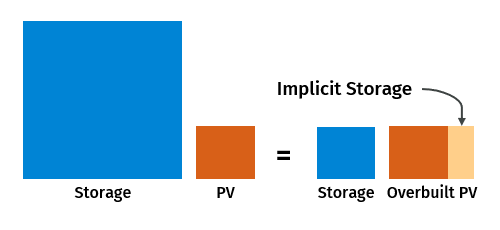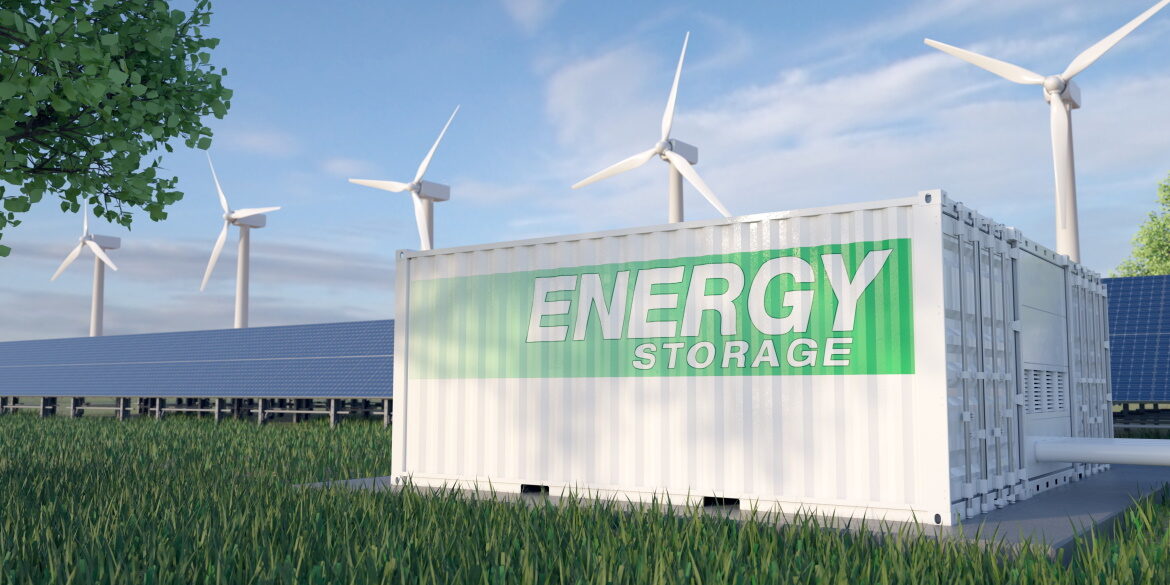With solar and wind providing a greater percentage of electricity, managing the intrinsic intermittency of variable resources is becoming increasingly important. How do we overcome this intermittency? Answering this question has been the focus of an international collaborative of global researchers, led by Clean Power Research since 2019, under the aegis of the International Energy Agency.
Enter the concept of firm power: the optimized portfolio of solutions that, when combined with solar or wind, render these resources capable of serving demand 24/365. This capability is indispensable to ultra-high penetration of these variable renewable resources. Researchers at Clean Power Research were the first to develop a holistic technological approach to achieve firm power in 2012-2014.
The centerpiece of firm power-enabling strategies is implicit storage: overbuilding and curtailment of wind and solar. Implicit storage reduces real (long-term) storage requirements to the point where firm 24/7/365 renewable generation becomes economically reasonable. While the principle of curtailment (i.e., throwing away) renewable power has been known to designers and operators of remote stand-alone systems for decades, it’s still new and counterintuitive to the grid-connected PV and wind world, where curtailment is still perceived as a negative.
“Implicit Storage” Design At-a-Glance

Source: Perez MJR, Perez R, Hoff TE. 2021. Least-Cost Firm PV Power Generation: Dynamic Curtailment vs. Inverter-Limited Curtailment. IEEE 47th IEEE Photovoltaic Specialists Conference (PVSC). DOI: 10.1109/PVSC43889.2021.9518445. Link
We’re happy to see that NREL and others have joined Clean Power Research in supporting this curtailment-as-a-proactive-strategy approach.
If you’re interested in this topic, check out the resources below where you can learn more or contact our Research team.
Media coverage: The role of implicit storage in firm power delivery
Yale Climate Connections. A simple idea to address fluctuations in solar energy production. 2021.
Quartz. Solar energy is so cheap that it can be wasted. 2020.
Utility Dive. Minnesota study finds it cheaper to curtail solar than to add storage. 2019.
Midwest Energy News. How Minnesota could economically reach 70 percent renewable electricity. 2019.
ClimateWire. Minnesota Renewables to surge with ‘no impact to taxpayers.’ 2018.
MPR News. Analysis of Minnesota’s 10 percent solar goal says it can be met economically five years early. 2018
PV Magazine. Overbuilding Solar Cheaper than Seasonal Storage. 2018.
Star Tribune. Study says Minnesota can economically reach energy goals by 2050. 2018.
PV Magazine. Getting (closer) to 100% Renewable Energy. 2018.
PV Magazine. Wood Mackenzie looks at the polar vortex and 100% renewable energy. 2019.
Intersolar (invited webinar). Inexpensive, Firm PV Without Conventional Backup: The Role of Supply Shaping Through Curtailment. 2019.
The Conversation, The Telegraph, SFGate, CTPost, The Morning Call, Chicago Tribune, GreenBiz (indexed by Reddit, AP, UPenn Kleinman Ctr for Energy Policy, Financial Times, etc.). A radical idea to get a high-renewable electric grid: Build way more solar and wind than needed. 2019.
CleanTechnica. No Joke: We Should Build More Solar & Wind Than Needed — It’s Cheaper. 2019.
LA Times (indexed by Reddit, UCDavis Energy and Efficiency Institute, EnergyCentral, Massachusetts Energy Network, Politico, The Hill, The State, USAid, etc.). California has too much solar power. That might be good for ratepayers. 2019.
Published research
Perez MJR. 2020. Solar Potential Analysis—MISO Region. Minnesota Department of Commerce. Technical Report prepared under DoE-SETO Award Number DE-EE0007669. Link
Pierro M, Perez R, Perez MJR, Prina MG, Moser D, Cornaro C. 2021. Italian protocol for massive solar integration: From solar imbalance regulation to firm 24/365 solar generation. Renewable Energy 169(11):425-436. Link
Perez MJR, Perez R, Hoff TE. 2021. Least-Cost Firm PV Power Generation: Dynamic Curtailment vs. Inverter-Limited Curtailment. IEEE 47th IEEE Photovoltaic Specialists Conference (PVSC). DOI: 10.1109/PVSC43889.2021.9518445. Link
Tapaches E, Perez R, Lauret P, Perez MJR, David M. 2019. Mitigation of the Variability of a PV Fleet via Geographical Dispersion and Energy Storage Systems on the Reunion Island. 2019 IEEE 46th Photovoltaic Specialists Conference (PVSC). DOI: 10.1109/PVSC40753.2019.8981214. Link
Pierro M, Perez R, Perez MJR, Moser D, Cornaro C. 2019. La transizione solare della produzione elettrica Italiana, sogno o realtà? QualeEnergia, January 2019. Link
Rabago KR, Perez MJR, Putnam M, Perez R. 2019. Achieving 100% renewables: supply-shaping through curtailment. PV Tech Power Journal V19:56-61. Link
Perez MJR, Perez R, Rábago KR, Putnam M. 2018. Overbuilding & curtailment: The cost-effective enablers of firm PV generation. Solar Energy 180:412-422. DOI: 10.1016/j.solener.2018.12.074. Link
Putnam M, Perez MJR. 2018. Solar Potential Analysis Report. Minnesota Department of Commerce. Link
Perez MJR, Perez R, Rábago KR, Putnam M. 2018. Lowest-cost, Firm PV Without Conventional Backup: Supply Shaping Through Curtailment. 2018 IEEE Photovoltaic Specialists Conference (WCPEC-7). DOI: 10.1109/PVSC.2018.8547791. Link
Perez MJR. 2015. Geographic Dispersion and Curtailment of VLS-PV Electricity. IEA PVPS Task 8 report, Ch.4 Future Technical Options for the Entire Energy System.
Perez MJR. 2014. A model for optimizing the combination of solar electricity generation, supply curtailment, transmission and storage. Order No. 3621033, Columbia University. ProQuest Dissertations and Theses, 246 pages. DOI: 10.7916/D8445JP4. Link
